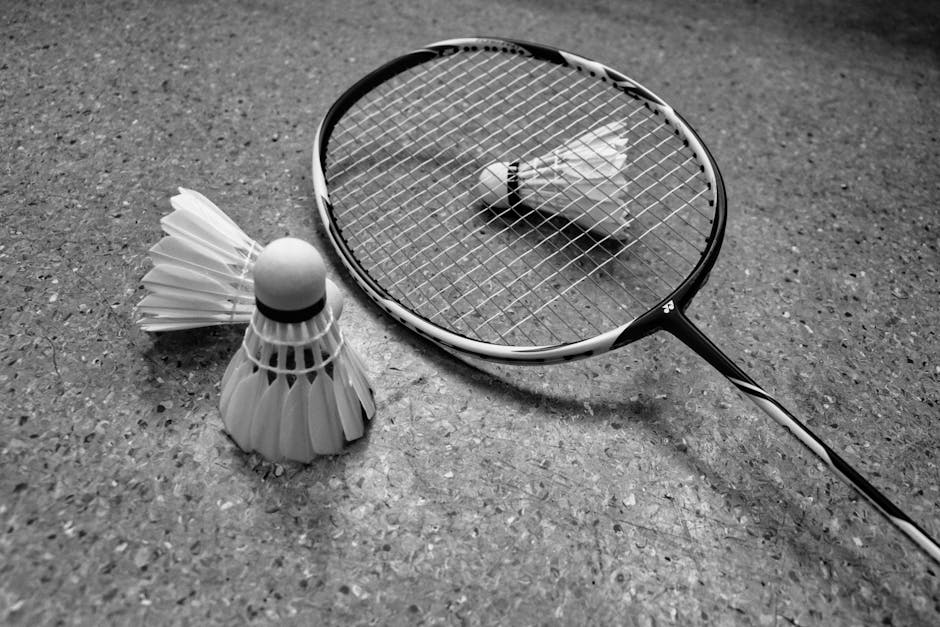Exploring the Physics of Shuttle Flash Badminton 🏸
Shuttle Flash Badminton isn’t just a game of skill and agility; it’s a fascinating dance of physics in motion. The game might appear simple at first glance, but there’s a world of science behind every serve, smash, and drop shot. In this blog post, we’ll delve into the physics that makes Shuttle Flash Badminton an exhilarating sport. Whether you’re a seasoned player or just a curious observer, this exploration will enhance your appreciation of the game. Let’s start the journey!
Table of Contents
1. The Basics of Badminton Physics
2. The Role of Gravity and Aerodynamics
3. Impact of Force and Motion
4. Energy Conservation and Transfer
5. Conclusion
6. FAQ
The Basics of Badminton Physics ⚙️
At its core, Shuttle Flash Badminton is governed by the principles of physics. The shuttlecock, with its unique shape and design, is crucial in determining the game’s dynamics. Unlike a regular ball, the shuttlecock’s open conical shape creates significant air resistance, which drastically affects its speed and trajectory. Understanding the basics of physics involved in this sport can help players improve their strategies and performance.
The Role of Gravity and Aerodynamics 🌪️
Gravity plays a pivotal role in the game, constantly pulling the shuttlecock downward. However, aerodynamics is equally crucial. The shuttlecock’s feathers cause it to decelerate rapidly, which is why it often appears to float in the air. This deceleration is due to drag, a force that opposes the shuttlecock’s motion through the air. Knowing how to manipulate these forces can give players a competitive edge, allowing them to control the shuttlecock’s flight path with precision.
Impact of Force and Motion 💥
Every stroke in Shuttle Flash Badminton involves the transfer of force and momentum. When you hit the shuttlecock, you’re transferring energy from your racket to the shuttle. The angle, speed, and force of your swing can significantly impact the shuttlecock’s speed and direction. A powerful smash, for example, requires a combination of strength and precision, channeling kinetic energy into a swift, downward trajectory that can be difficult for opponents to return.
Energy Conservation and Transfer 🔄
One of the fascinating aspects of Shuttle Flash Badminton is how it illustrates the conservation of energy. On a microscopic level, energy is transferred between the shuttlecock and the racket, as well as between the player’s body and the racket. Players must also manage their energy efficiently to sustain performance throughout a match. Strategic play often involves conserving energy by forcing opponents to move more, thereby tiring them out faster.
Conclusion 🎯
Shuttle Flash Badminton is a thrilling sport that beautifully marries physical skill and scientific principles. By understanding the physics behind the game, players can enhance their strategies and enjoy a deeper appreciation of the sport. Whether you’re smashing a shuttlecock across the court or watching from the sidelines, remember that every movement is a testament to the fascinating world of physics.
FAQ 🤔
Q: How does the design of a shuttlecock affect its flight?
A: The shuttlecock’s conical shape and feather construction create significant air resistance and drag, slowing its speed and allowing for controlled and strategic play.
Q: Why is understanding physics important in playing badminton?
A: Understanding physics helps players improve their game by mastering the forces at play, such as gravity, aerodynamics, and energy transfer, which can lead to more effective shots and strategies.
Q: What role does aerodynamics play in Shuttle Flash Badminton?
A: Aerodynamics influences the shuttlecock’s trajectory and speed, with drag from the feathers causing it to decelerate and alter its flight path, making the game both challenging and strategic.
Q: How can players use physics to their advantage?
A: Players can use physics to their advantage by adjusting their swings to control force and momentum, optimizing energy transfer, and strategically managing their energy throughout the game.
Q: What is the significance of energy conservation in badminton?
A: Energy conservation is crucial for sustaining performance, as players must manage their physical resources effectively to maintain stamina and outlast opponents in long matches.
